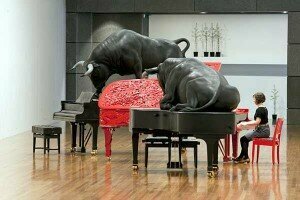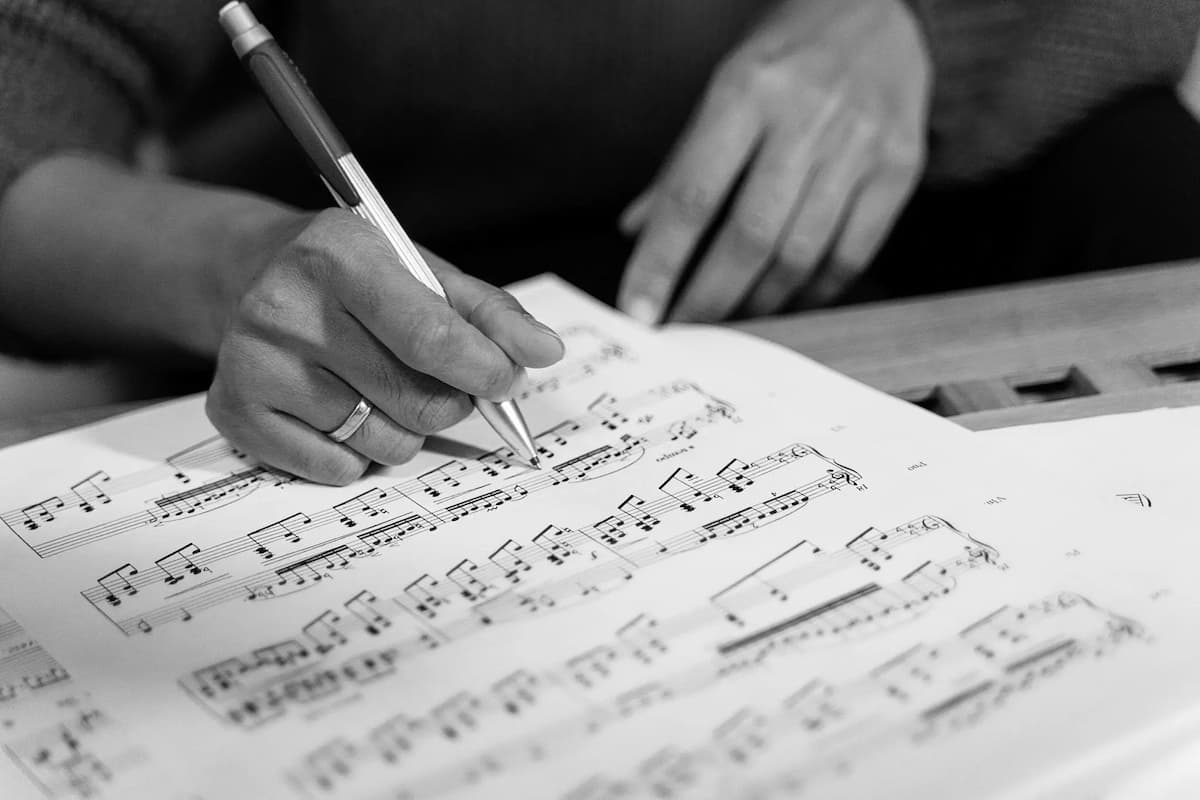
2011 Venice Biennale – On First Looking into Chapman’s Homer
He Korero Purakau mo Te Awanui o Te Motu: story of a New Zealand river was created by New Zealand sculptor Michael Parekowhai (b.1968) as part of a larger artwork for the 2011 Venice Biennale exhibition. The title of the sculpture refers to a 1920s New Zealand novel which in turn was the inspiration for Jane Campion’s film ‘The Piano’ (1993). The artist is insistent that the piano should be played and wherever the instrument is on display – whether in London, its home at the Museum of New Zealand Te Papa Tongarewa in Wellington, or on tour in other exhibitions – the piano is kept in tune so that members of the public may play it. For the artist, the art work comes to life when played and performance is crucial to it:
There is no object I could make … that could fill a room like sound can…….. the actual piano just kind of melted away.
Michael Parekowhai
The Heart Asks Pleasure First – Michael Nyman from The Piano
I knew it was an old instrument when I sat down to play it; its keys are ivory with a creamy patina of age, and it has a light action, suggesting a lot of use in its former life. After I’d played it, I decided to do some digging to find out more about the instrument and discovered its rather fascinating provenance.
The original instrument was a 1920s Steinway Model D, sold in London and shipped to New Zealand half a century later. Inside the body of the piano was a pencilled dedication: “Dear friends, may this beautiful instrument bring you happiness and inspiration. All my love, Lili Kraus, London, Christmas 1959.” Lili Kraus was a Hungarian concert pianist, noted in particular for her interpretations of Mozart and Beethoven, Chopin and Bartok. After time spent in a Japanese prisoner of war camp during the Second World War, she moved to New Zealand, where she became a British citizen and spent many contented years performing and teaching. She finally settled in the US, where she died in 1986. For me the encounter with the piano felt curiously serendipitous, for only last week I had been reading about Lili Kraus’s premiere of Schubert’s ‘Grazer’ Fantasy (about which more in a later article), and listening to her recordings of this little-known work…

He Korero Purakau mo Te Awanui o Te Motu: story of a New Zealand river, 2011 by Michael Parekowhai. Piano, wood, ivory, brass, lacquer, steel, ebony, paua shell, mother-of-pearl, upholstery. Te Papa Tongarewa, Wellington, NZ.
In his sumptuously carved grand piano – an instrument originally built in Germany – Parekowhai shifts the cultural focus: the carvings fully take ownership of the piano, literally and metaphorically, transforming a European instrument, which held pride of place in the nineteenth century drawing rooms of New Zealand and Europe alike, into a work of ornate Maori symbolism and colourful story-telling, while also making a thought-provoking and witty commentary on notions of European colonialism and cultural appropriation.
When I played the Maori piano, I had just come from a weekend of house concerts given very much in the tradition of the nineteenth-century European salon, with an attentive audience formally seated in the music room of an English country house. I had never played a piano in a busy gallery space before, where people were wandering around looking at the exhibition. My performance felt secondary to the exploration of the artworks on display, and I wanted my mini programme of pieces by Pärt, Sibelius, Schumann, Bach and Corea to feel like a background to the exhibition, rather than expecting people to stand still and listen. In fact, the experience was very mixed: despite a lot of noise of people walking through the exhibition, there were moments when a sense of attentive listening was palpable. At other times people walked around the piano to examine the carving in more detail and take photos. Some stood behind me, looking at the music, or peered into the belly of the instrument to see the hammers in action or to marvel at the wonderful light effects and shadows created by the pierced carving. The sound of the piano being played drew people into the space in which it was exhibited, and the gallery setting allowed people who may not necessarily go to classical concerts to experience music in an informal yet meaningful way. I felt very secondary to the instrument, yet also part of a bigger, collective artistic and musical experience. The piano was on show, not the music, and certainly not me, and I like to think this is the effect the artist wants to achieve with his work.


